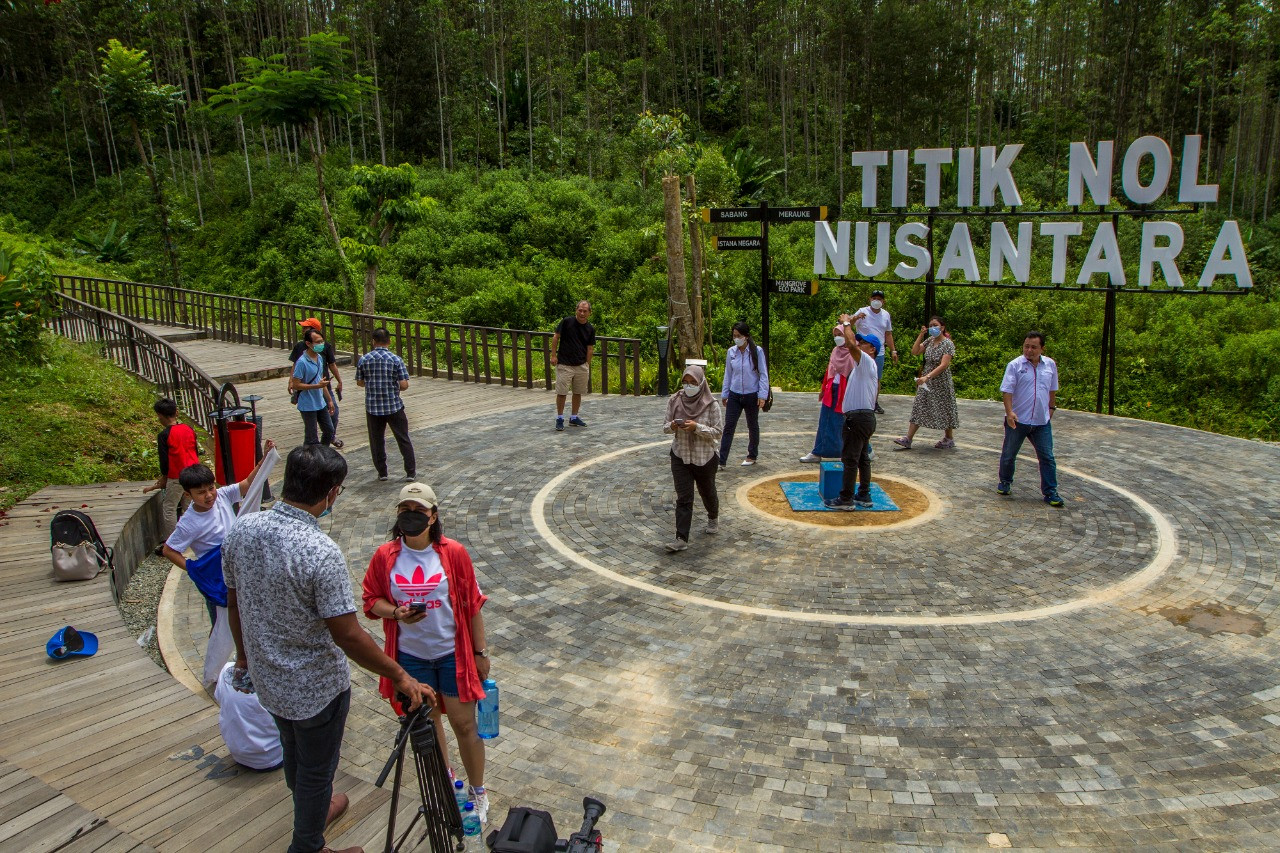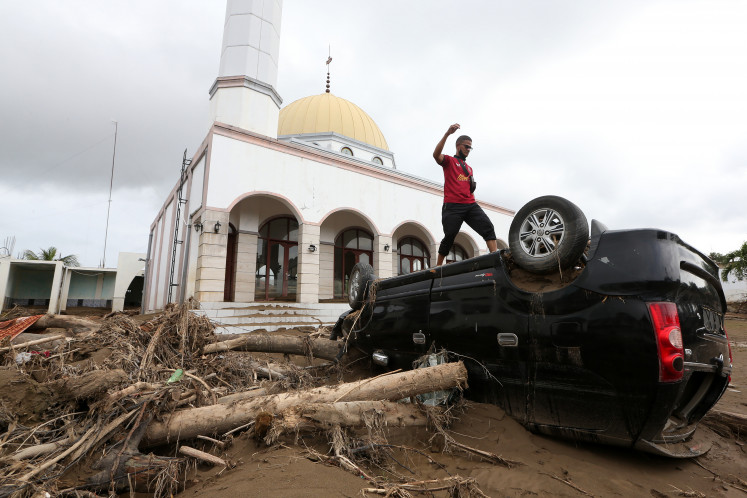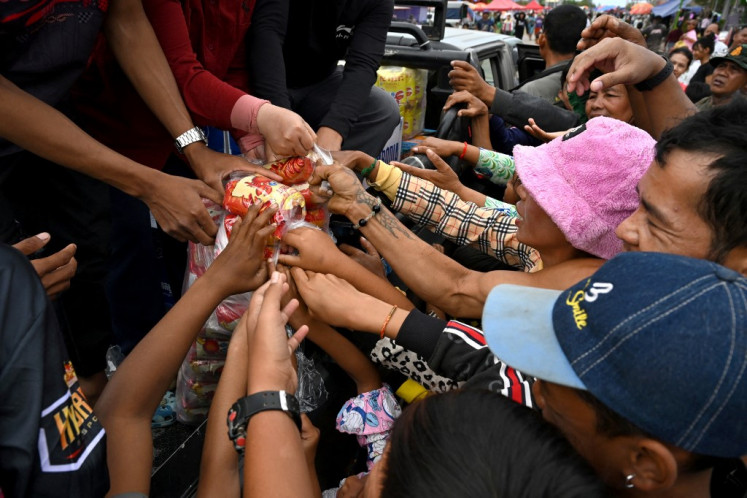Popular Reads
Top Results
Can't find what you're looking for?
View all search resultsPopular Reads
Top Results
Can't find what you're looking for?
View all search resultsIndonesia’s capital move mirrors the Dutch
Leaving behind the troubled capital city is not a new development in Indonesia’s history.
Change text size
Gift Premium Articles
to Anyone
I
ndonesia is set to move the capital Jakarta, just like Indonesia’s colonial rulers, the Dutch, did more than 200 years ago.
The new capital city, which will be in Kalimantan, is intended to be very different from Jakarta which is in deep trouble as it sinks with flooding, pollution and endless traffic congestion adding to its woes. Similar issues plagued the Dutch in the late 1700s-early 1800s which prompted a shift away from the old capital to the site of present day Jakarta.
This repetition of what the coloniser did feeds into interesting threads of post-colonial theory.
Postcolonial theory revisits, remembers, and interrogates a nation’s development after colonialism. It seeks to investigate the relationship between the colonisers and the colonised, as well as how colonial policies and attitudes influenced both nations. One feature of the postcolonial condition is "political amnesia", the desire to erase memories of colonial subordination and its painful history.
The theory explores the symbiotic relationship between colonisers and colonised as occupied by a state of hate and desire. A postcolonial nation wishes to be distinct from its coloniser, but it distinguishes itself within the framework of colonialism. Nationalism emerged as a project of self-modernisation frequently based in a compromised form of colonial domination.
In the case of Jakarta, when the Dutch East India Company invaded the city and built a Dutch fort in 1619, Batavia (now Jakarta) was transformed from a supply station city for colonial trade to the Dutch centre of power. 'Downtown Batavia' (now Kota) was surrounded by fortified walls and a river. Several forts along the wall protected the city from enemy attacks. The fortification and grid system of canals suggest the city was designed as a little Amsterdam.
While the city was expected to function like a Dutch town, the humidity proved unbearable. The canals and river became a breeding ground for mosquitoes. Malaria and dengue fever spread easily. The heavily-polluted river became a breeding ground for cholera, diarrhoea and skin diseases. The city was unhealthy to live in and in disrepair. Most residents started leaving the decaying city and moved south.
After Napoleon Bonaparte subjugated Holland in 1806, his brother Louis ascended to the Dutch throne. There followed a distinct shift of power from the Dutch to the French. Louis dispatched Daendels, the newly-appointed Governor-General of Batavia, to reorganise the city. His first idea was to relocate the dreadful old capital to a healthier area a few kilometres to the south, in a suburb called Weltevreden. Here, there are two areas that became the new centre of power: Waterlooplein (now Lapangan Banteng) and Koningsplein (now Merdeka Square).
Daendels demolished the old city wall and established Weltevreden as the new centre of power. He built his magnificent palace there in front of a vast open space. While the old city was known as Downtown Batavia, the new centre of French colonial power was known as 'Uptown Batavia' The city's renaming officially marked the transition of power from Dutch to French colonial power. Weltevreden was described as "A Batavian Napoleon in Miniature" However, unlike Downtown Batavia, Weltevreden's grid system was determined by roads rather than canals. The remnants of this French colonial city can still be seen today.
There is a pattern to the locus of power and colonialism. First, instead of repairing the former city, the colonial government preferred to choose a new site and build from scratch. Second, each colonial government established its own identity by establishing a centre of power different from the previous symbolism. It is part of the process of forging a new legacy distinct from the former ruler.
Jakarta remained a power centre in the postcolonial era. The city expanded to the south, following the former coloniser's axis. Buildings such as the National Monument on the former Koningsplein site, the Semanggi Interchange, the Parliament Building, and the Bung Karno' Stadium, as well as the conversion of the former governor general's palace and the official residence of the governor general to become the Freedom Palace (Istana Merdeka) and the State Palace (Istana Negara), reflect the postcolonial dilemma: hating the former coloniser while at the same time desiring to be like them.
Decades later, Jakarta has grown into a megacity with an estimated population of 11 million. But the city has severe problems such as population concentration, excessive groundwater extraction, land subsidence, and flood, which make it the fastest sinking city in the world. Jakarta also has a poor reputation for traffic congestion, economic disparities and natural disasters.
The attempt to save the sinking city was to build three layers of sea walls to protect the city from the sea flood. The Giant Garuda Sea Wall has been heavily criticised because it will close off Jakarta Bay and destroy the environment while also being prohibitively expensive to build. In contrast to a solution that properly addresses the cause of flooding, the project is merely a concrete-heavy technological approach.
In 2019, the government decided to move the capital city to Kalimantan. The new capital city represents the new dream and vision: smart and sustainable, resilient, environmentally friendly, democratic, economically sound, and free of environmental disaster, pollution and traffic.
Nonetheless, those postcolonialism themes have emerged. Instead of dealing with the current problems in Jakarta, the postcolonial government chose to find a new location and build a new capital from scratch.
This redefining of Indonesian identity is notable in the postcolonial era. Borrowing international styles under President Sukarno, returning to traditionalism under President Suharto, and now smart and sustainable cities under Jokowi all reflect the postcolonial nation's state of hatred and desire towards colonialism.
---
The writer is an associate professor at Monash University in Indonesia, specialising in urban design, architecture, and Southeast Asian studies.
This article is part of a Special Report on 'Cities after colonialism', produced in collaboration with the Calcutta Research Group.
Originally published under Creative Commons by 360info™.











